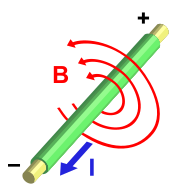I don't think you've misunderstood anything.
Although the velocity of the magnet counts in both explanations, the theoretical explanation as to why there is no force on the charged ball is different. And both explanations sorta contradict.
Tach's explanation says that the ball is not "cutting" the field lines as the field lines themselves have a velocity, which is not something usually associated with them.
i have also seen others give przyk's explanation. it says that there is a magnetic force on the ball, since the ball has a relative velocity in a magnetic field. but this balanced by an electric field generated by the moving magnet.
I also referred to the magnetic field generated by a lone, moving charged, where the magnetic flux density generated is based on the charge's relative velocity. But Tach said little on the matter.
Quite a wordy post, but now you know why i'm confused.
Although the velocity of the magnet counts in both explanations, the theoretical explanation as to why there is no force on the charged ball is different. And both explanations sorta contradict.
Tach's explanation says that the ball is not "cutting" the field lines as the field lines themselves have a velocity, which is not something usually associated with them.
i have also seen others give przyk's explanation. it says that there is a magnetic force on the ball, since the ball has a relative velocity in a magnetic field. but this balanced by an electric field generated by the moving magnet.
I also referred to the magnetic field generated by a lone, moving charged, where the magnetic flux density generated is based on the charge's relative velocity. But Tach said little on the matter.
Quite a wordy post, but now you know why i'm confused.






